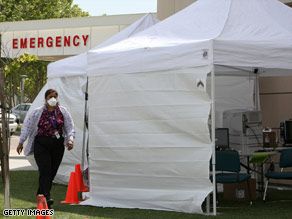People have been worried about nanotechnology for quite some time now; nano-asbestos, advanced nano-enabled weapons, and self-replicating “gray goo” nanobots that accidentally go out of control. But what if everything goes right? What if nanotubes and nanoparticles are functionalized to stay out of the ecosystem? What if there are no major wars? What if nanoreplicators are never built, or if they are, they use modern error correction software to never mutate? What happens if nanotechnology fulfills humanity’s desires perfectly?
In the next decade or so, a new type of desktop appliance will be developed—a nanofactory that consists of very many productive nanosystems—atomically precise nanoscale machines that work together to build bulk amounts of atomically precise products.
The Foresight Technology Roadmap for Productive Nanosystems has identified a number of different approaches for building these atomically precise systems of machines that can produce other nanosystems http://www.foresight.org/roadmaps/. These approaches include Paul Rothemund’s DNA Origami, Christopher Schafmeister’s Bis-proteins, Joe Lynden’s Patterned Atomic Layer Epitaxy, and Robert Freitas and Ralph Merkle’s Diamondoid Mechanosynthesis http://www.rfreitas.com/Nano/JNNDimerTool.pdf, http://e-drexler.com/d/05/00/DC10C-mechanosynthesis.pdf, and http://www.molecularassembler.com/Papers/JCTNPengFeb06.pdf. Each of these approaches has the potential of building the numerous nanoscale electronic, mechanical, and structural components that comprise productive nanosystems.
The ultimate result will be a nanofactory that can build virtually anything—limited only by the laws of physics, the properties of the input feedstock, and the software that controls the device.
The concern is that this relatively primitive application—if successfully deployed as expected—will pose significant challenges, even if nobody accidentally makes a mistake or puts it to evil ends. Consider the simple, safe, and optimistic possibilities made possible by a nanofactory that can build a wide variety of atomically precise, large-scale products out of a few different input elements (say carbon, hydrogen, oxygen, iron, silicon, germanium, boron, phosphorus, and titanium) http://www.MolecularAssembler.com/Nanofactory. The factory itself would not be nano-sized; it would be an appliance that is approximately the same size as a desktop printer. However, its multi-material 3D output products would be atomically precise at the nanoscale.
The first and most valuable product of a nanofactory will be another nanofactory. The second most valuable product will be a system that refills the nanofactory’s “inkjet cartridge” using inexpensive feedstock, and the third will be a machine that turns sand into photovoltaic solar cells (with which to power the nanofactory). It is not clear what would one would print next. Programmable material for a holodeck? Wearable supercomputers? A few pounds of medical nanobots?
In any case, a few months to a few years after the first commercial release of a nanofactory, almost everyone will have one. It is not clear what the price might be—perhaps $1000. The price could not drop to zero, though it might approach the cost of dirt, sunshine, and the time required to print a nanofactory.
Diamond and its carbon-based relatives are an engineer’s best friend; being 50 times stronger than steel, only their atomic structure differentiates it from coal. Once people have a printer that can inexpensively make arbitrary, atomically perfect diamondoid nanostructures out of carbon, they are going to make everything out of it—from wearable supercomputers and skyscrapers that reach Low Earth Orbit to medical nanobots and flying cars—anything that doesn’t violate the laws of physics and has a CAD file description available on the web. Therefore, any cheap sources of carbon will be snatched up quickly.
Because human desire is essentially infinite, the demand for carbon will reach very high levels fairly quickly.
Air is free, and so is the carbon dioxide in it.
If taking carbon dioxide out of the air became economically favorable (and with inexpensive solar power it probably will be), then the result will be a ‘tragedy of the commons’. This would solve CO2-caused global warming with a vengeance, but would result in global freezing—and worse. If enough carbon dioxide in the air was removed, plant life would start to die.
Futurist Keith Henson has predicted that to counteract this outcome, the Sierra Club will frantically strip-mine all the coal under Wyoming and burn it as dirty a manner possible to save the rain forests. If Henson is correct, then Congress might pass laws that make it illegal to take CO2 from the air. But how will the government enforce a ban against unauthorized CO2 extraction?
Nanotechnology, of course.
Unfortunately, a government with unfettered nanotechnology-enhanced enforcement powers would likely be a dictatorship that makes the totalitarian regime of Orwell’s 1984 look like a kindergarten playground.
An alternative to a dictatorship would involve ownership of air. This sounds strange and preposterous until we remember that the American Indians thought that land ownership was strange and preposterous.
A more jarring alternative might involve the re-engineering of plants so that they can live without carbon dioxide, perhaps by using silica as a structure material (as diatoms do). Do we really trust ourselves to recreate Earth’s biosphere in such a drastic manner? Some optimists will tell us not to worry about such drastic genetic modification on the ecosystem; we will back up the whole thing on the web somewhere, and use modern software revision-tracking software to keep it safe http://tortoisesvn.net/.
Admittedly, these scenarios seem rather far-fetched. However, as Foresight Institute co-founder Christine Peterson put it, “If you look out into the long-term future and what you see looks like science fiction, it might be wrong. But if it doesn’t look like science fiction, it’s definitely wrong” http://www.washingtonpost.com/wp-dyn/content/article/2008/04…28_pf.html.
We are not yet at the level of technological maturity at which we can confidently assert that widescale nanofactory development and distribution is inevitable. Of the four main approaches to Productive Nanosystems, only the most rudimentary lab demos have proven the concepts. Therefore, the suggestion that nanofactories will alter the conditions of anthropogenic global warming may be met with skepticism — as it should. However, in light of the exponential progress in nanotechnology in the past few years, it is likely that some version of the carbon dioxide tragedy of the commons will happen in some form or another. Researchers, policy makers, and the public at large must become aware of these possibilities, and thoughtfully analyze them. Otherwise disruptive events may cause panic, as most scenarios predict a quick transition from initial invention to wide distribution of these technologies.
Ultimately, this prediction means two things. First, that wasting precious time, money, and effort on stopping global warming will increase the risk of other, more serious catastrophes. Second, we will need to set aside any conservative values regarding the preservation of the Earth’s ecosystem as it currently exists. Change will happen. The good news is that a Space Pier http://autogeny.org/tower/tower.html and other low-cost methods to orbit will be available for conservatives who are intent on preserving the status quo biosphere elsewhere in the solar system. Of course, these are the same people who are probably the most emotionally resistant to leaving, which might lead to conflicts.
Howard Bloom gently points out that “Nature is not a motherly protector”. Putting it more bluntly and extending the anthropomorphism, Mother Nature is a brutal psychopath who uncaringly tortures and slaughters her children. She does not build nice little eco-friendly Gardens of Eden. In fact, there have been 148 major die-offs, and six much bigger mass extinctions (in which over 90% of species on this planet were wiped out—each and every time). Those die-offs resulted from natural physical disturbances in a universe that is fine-tuned to allow carbon-based life to emerge. It’s a mixed message, but the message is simple: Adapt or die. Nanotechnology will not change that message. However, it will provide us with better biotech tools that will enable us to (for better or worse) manipulate our bodies and brains.
As the nanotechnology revolution begins, we will need to think hard about its secondary effects and ethical implications. The sheer magnitude of changes will cause us to consider carefully our ultimate role in the universe, our essential nature as human persons, the meaning of our lives, and what we really, really desire.
Tihamer Toth-Fejel, MS
General Dynamics Advanced Information Systems
Michigan Research and Development Center

 A younger science than physics, biology is more linear and less exotic than its older sibling. Whereas physics is (mostly) elegant and symmetric, biology is lunging and ungainly, bound to the material and macroscopic. Its predictions are more specific, its theories less sweeping. And yet, in the end, the exploration of life is the frontier that matters the most. Life gives meaning to all elegant theories and contraptions, life is where the worlds of cosmology and ethics intersect.
A younger science than physics, biology is more linear and less exotic than its older sibling. Whereas physics is (mostly) elegant and symmetric, biology is lunging and ungainly, bound to the material and macroscopic. Its predictions are more specific, its theories less sweeping. And yet, in the end, the exploration of life is the frontier that matters the most. Life gives meaning to all elegant theories and contraptions, life is where the worlds of cosmology and ethics intersect.
